The Well-Tempered Ear
UW-Madison’s new Marvin Rabin String Quartet makes its premiere when it performs a FREE online concert this Friday night
Leave a Comment
PLEASE HELP THE EAR. IF YOU LIKE A CERTAIN BLOG POST, SPREAD THE WORD. FORWARD A LINK TO IT OR, SHARE IT or TAG IT (not just “Like” it) ON FACEBOOK. Performers can use the extra exposure to draw potential audience members to an event. And you might even attract new readers and subscribers to the blog.
By Jacob Stockinger
This Friday night, Nov. 6, will see the premiere concert by the new Marvin Rabin String Quartet at the University of Wisconsin-Madison Mead Witter School of Music.
The concert takes place virtually and online on the music school’s YouTube channel. It is scheduled to start at 6:30 p.m. and run to 8 p.m.
Here is the direct link: https://youtu.be/ObJMMA220Jw
The new string quartet — which replaces The Hunt Quartet — is named in honor of the late Dr. Marvin J. Rabin, who was an internationally acclaimed music educator and Professor Emeritus at UW-Madison.
Rabin (below) is best known as the founder of the Wisconsin Youth Symphony Orchestras.
The members of the Marvin Rabin String Quartet are graduate students at the UW-Madison.
Members are (below from top left) are: Fabio Saggin, viola; Ben Therrell, cello; Ava Shadmani, violin; and Rachel Reese-Kollmeyer, violin.
They will perform the virtual concert in the Mead Witter Foundation Concert Hall of the Hamel Music Center.
There is NO in-person attendance
The program is:
String Quartet in B-flat major, Op. 18, No. 6 by Ludwig van Beethoven (1770-1827)
Two Armenian Miniatures for String Quartet –“The Red Shawl” (heard in the YouTube video at the bottom) and “Echmiadzin Dance” – by the Armenian priest Komitas (1869-1935, see 1902 photo below) as arranged by S. Aslamazyan
Here is Komitas’ Wikipedia entry: https://en.wikipedia.org/wiki/Komitas
15-MINUTE INTERMISSION
String Quartet in E minor, Op. 44, No. 2 by Felix Mendelssohn (1809-1847)
Tags: #AvaShadmani, #BenTherrell, #BlogPost, #BlogPosting, #ChamberMusic, #ConcertProgram, #CriticallyAcclaimed, #EmeritusProfessor, #FabioSaggin, #FacebookPost, #FacebookPosting, #FacultyMember, #FelixMendelssohn, #Fridaynight, #GraduateStudent, #HamelMusicCenter, #HuntQuartet, #JacobStockinger, #LudwigVanBeethoven, #MarvinRabin, #MarvinRabinStringQuartet, #MeadWitterFoundationConcertHall, #MeadWitterSchoolofMusic, #MusicEducation, #Musicfaculty, #MusicSchool, #OnlineConcert, #StringMusic, #StringQuartet, #TheEar, #TheUW, #UniversityofWisconsin-Madison, #VirtualConcert, #Wikipediabiography, #Wikipediaentry, #WisconsinYouthSymphonyOrchestras, #YouTubeChannel, #YouTubevideo, acclaimed, Armenia, Armenian, arranged, arrangement, Arts, attendance, audience, Ava Shadmani, Beethoven, Ben Therrell, biography, blog, cellist, Cello, celo, Chamber music, Christian, Christianity, Classical music, composer, Concert, dance, Echmiadzin, educator, Fabio Saggin, Facebook, Facebook post, Facebook posting, faculty, Felix Mendelssohn, founder, Friday night, graduate student, Hamel Music Center, hear, heard, honor, Hunt Quartet, in person, international, internationally, Jacob Stockinger, Komitas, late, Ludwig van Beethoven, Madison, Marvin Rabin, Marvin Rabin String Quartet, Mead Witter Foundation Concert Hall, Mead Witter School of Music, Mendelssohn, miniature, Music, Music education, music faculty, music school, named, no, online, Orchestra, perform, post, posting, premiere, priest, professor, program, Rachel Reese-Kollmeyer, red, replace, schedule, shawl, slated, string music, String quartet, Student, symphony, The Ear, United States, University of Wisconsin-Madison School of Music, University of Wisconsin–Madison, UW, UW-Madison, Viola, Violin, violinist, violist, virtual, Wikipedia, Wisconsin, Wisconsin Youth Symphony Orchestras, WYSO, YouTube, YouTube channel
Classical music: How did Baroque composer Telemann get overshadowed and why is he being rediscovered? Trevor Stephenson talks about his all-Telemann concerts this weekend
2 Comments
IF YOU LIKE A CERTAIN BLOG POST, PLEASE SPREAD THE WORD. FORWARD A LINK TO IT OR, SHARE IT or TAG IT (not just “Like” it) ON FACEBOOK. Performers can use the extra exposure to draw potential audience members to an event. And you might even attract new readers and subscribers to the blog.
By Jacob Stockinger
This weekend, the Madison Bach Musicians (MBM) will give two performances of a concert devoted exclusively to the music of Baroque composer Georg Philip Telemann (below).
The performances are: Saturday night, Oct. 5, at 8 p.m. in the Atrium Auditorium of the First Unitarian Society of Madison, 900 University Bay Drive, where MBM will be artists-in-residence this season; the second performance is on Sunday afternoon, Oct. 6, at 3:30 p.m. at the Holy Wisdom Monastery, 4200 County Road M, in Middleton.
Tickets are $35 in advance and are available at the Willy Street Coop East and West, and at Orange Tree Imports. Tickets at the door are $38 for the general public; $35 for seniors; and $10 for student rush tickets that go on sale 30 minutes before each lecture. The lectures take place 45 minutes before the performance, at 7:15 p.m. and 2:45 p.m, respectively.
Why focus on the music of Georg Philipp Telemann (1681-1767)?
Trevor Stephenson, the founder and director of the Madison Bach Musicians, talks about it in an email Q&A with The Ear:
Why does Telemann, who was so respected in his day, seem to get far less play, fewer performances and less mentioning today than his contemporaries Bach, Vivaldi and Handel?
Telemann was born in 1681 — three years after Vivaldi and four years before Bach and Handel. He was astonishingly prolific and it is estimated that he wrote more than Bach and Handel combined.
On top of this, he was very highly respected and was widely published and performed during his life. Remember, it was Telemann — not Bach — whom the Leipzig council wanted to hire for the music director position in 1723. But Telemann was enjoying his wonderful new post in Hamburg—a thriving port city — and was not about to go back to landlocked Leipzig where he had spent his student days.
At any rate, after the 18th century had passed and its music became somewhat marginalized, in the early 19th century it was Bach’s music, not Telemann’s, that suddenly re-emerged.
Bach’s tremendous emotional depth, contrapuntal mastery and ability to control large-scale forms in an almost heroic way spoke with greater urgency to the Romantic sensibility than did Telemann’s elegant craftsmanship. Indeed, 19th-century Bach scholars often mean-spiritedly used Telemann as a foil for Bach.
Telemann’s music nevertheless received a modicum of performances in the early 20th century, but in the 1980s and 1990s, as the Early Music movement really got rolling—and the level of period-instrument performance increased—it became apparent that Telemann’s music really was hot stuff!
Now his music is enjoying a wonderful and well-deserved revival.
What are the appealing and admirable qualities you see in Telemann’s music? Are there any drawbacks to his compositions?
Telemann had a wonderful sense of melodic invention — probably music’s analog to an artist’s ability to draw — and his tunes seem to flow out effortlessly. And although his output was opulent, he had an uncanny sense of form and how much weight – duration — any given musical scene could bear.
He also was a masterful musical polyglot, able to jump back and forth easily between Italian, French and German musical idioms; and like Bach, he was also adept at integrating them into a unified style—this integration of national styles was a frequently acknowledged goal of 18th-century composers.
Telemann’s limitations are apparent when he is juxtaposed with Handel, who could dramatically really take the roof off and who could also find the inner essence of the human voice, and Bach who, like Shakespeare, through a near alchemy of sound and meaning could consistently define and further what it means to be human.
How and why did you put this program together? What unifies it and what would you like the public to know about it?
Madison Bach Musicians’ concertmaster and assistant artistic director Kangwon Kim (below left with Emily Dupere) did the heavy lifting in putting together this wonderful program of Telemann’s chamber music. MBM will present three of Telemann’s programmatic or story works, one church cantata and three purely instrumental selections.
With narration and graphics, we’ll walk you through how he cleverly depicts scenes from Swift’s Gulliver’s Travels (1726, below), which had been in print only two years when Telemann wrote his topical Gulliver Suite in 1728. Telemann loved ludicrous irony, like the tiny Lilliputians dancing a heavy chaconne—which Telemann notates in a hilarious, confounding mass of 64th and 128th notes. And then there’s the Brobdingnagian giants doing their rendition of a light-footed gigue, rendered in loopy, cumbersome whole notes!
We’ll also present the marvelous Suite Burlesque based upon Cervantes’ Don Quixote (below): Quixote’s love for Dulcinea, his jousting with windmills, and how a crowd mocks Quixote’s faithful, world-weary servant Sancho Panza.
To top it off, guest artist mezzo-soprano Clara Osowski (below) will sing the droll and sweetly amusing cantata about the demise — brought about by the cat! — of a favorite and very artistic canary. Osowski will also sing the church cantata Weicht, ihr Sünden, bleibt dahinten (Yield, You Sins, and Stay Behind Me). Telemann wrote more than 1,000 church cantatas.
The concert includes non-programmatic works for string band: the dramatic and Corelli-esque Sonata à 6 in F minor for two violins, two violas, cello and continuo; and the sparkling Sinfonia Spirituosa (heard in the YouTube video at the bottom). I will also perform some fascinating Fantasy miniatures for solo harpsichord, and will give a pre-concert lecture at both events.
For more information about the program, the performers and tickets, go to: www.madisonbachmusicians.org
Tags: #18thCentury, #19thCentury, #20thCentury, #AntonioVivaldi, #ArcangeloCorelli, #AtriumAuditorium, #BaroqueComposer, #BaroqueContinuo, #BaroqueMusic, #BlogInterview, #BlogPost, #BlogPosting, #CelloMusic, #ChamberMusic, #ChristianChurch, #ClaraOsowski, #ClassicalMusician, #ContrapuntalMusic, #DonQuixote, #EarlyMusicMovement, #FacebookPost, #FacebookPosting, #FirstUnitarianSocietyofMadison, #GeorgeFridericHandel, #GeorgPhilippTelemann, #GuestArtist, #Gulliver'sTravels, #HamburgGermany, #HarpsichordMusic, #HeavyLifting, #HolyWisdomMonastery, #HotStuff, #HumanVoice, #InstrumentalMusic, #JohannSebastianBach, #JonathanSwift, #KangwonKim, #Large-scale, #LeipzigGermany, #MadisonBachMusicians, #Mezzo-sopranoSinger, #MigueldeCervantes, #MusicalStyle, #MusicDirector, #OrangeTreeImports, #PeriodInstrument, #PortCity, #Pre-concertLecture, #RomanticMusic, #SacredCantata, #SacredMusic, #SanchoPanza, #SaturdayNight, #SeniorCitizen, #StringMusic, #Sundayafternoon, #ViolaMusic, #ViolinMusic, #VocalMusic, #WholeNotes, #WilliamShakepseare, #WillyStreetCoop, #WillyStreetCoopEast, #WillyStreetCoopWest, 18th century, 19th century, 20th-century, ability, afternoon, alchemy, analog, analogue, Antonio Vivaldi, Arcangelo Corelli, artist, artist-in-residence, Atrium Auditorium, Bach, band, Baroque, behind, blog, Burlesque, Cantata, cellist, Cello, chaconne, Chamber music, Christian, Christianity, church, Clara Osowski, Classical music, classicalmusic, composer, Concert, concertmaster, contemporary, continuo, contrapuntal, control, Corelli, council, counterpoint, craftsmanship, crowd, cumbersome, dance, dancing, days, depth, devoted, Don Quixote, draw, Dulcinea, Early music, elegant, email, emotional, enjoy, exclusive, Facebook, faithful, fantasy, fascinating, First Unitarian Society of Madison, form, forward, French, Georg Philipp Telemann, George Frideric Handel, German, giant, giants, gigue, goal, guest artist, Gulliver's Travels, Hamburg, Handel, harpsichord, heavy lifting, heroic, hire, Holy Wisdom Monastery, hot stuff, human voice, idiom, instrumental, interview, invention, irony, Italian, Johann Sebastian Bach, Jonathan Swift, jousting, Kangwon Kim, landlocked, lecture, Leipzig, like, Lilliputian, link, loopy, Love, ludicrous, Madison Bach Musicians, marginalized, marvelous, mastery, me, mean-spirit, meaning, melodic, melody, mention, Mezzo-soprano, Middleton, Miguel de Cervantes, miniature, movement, Music, Music director, musical, musical style, national, night, notes, opulent, Orange Tree Imports, output, performance, performer, period-instrument, play, polyglot, port city, position, post, posting, programmatic, prolific, public, pure, Q&A, rediscover, respect, revival, Romantic, sacred cantata, sacred music, Sancho Panza, Saturday night, scene, scholar, senior, sense, sensibility, servant, Shakespeare, share, sins, solo, Sonata, Sound, story, string, Student, style, subscriber, Suite, Sunday, tag, tickets, tiny, tune, tunes, uncanny, unified, urgency, use, Viola, Violin, violinist, violist, Vivaldi, vocal music, weight, well-deserved, whole, whole notes, Willy Street Coop, windmill, Wisconsin, wonderfu, world-weary, yield
Classical music: The Middleton Community Orchestra and conductor Kyle Knox brightened a soggy spring with early Beethoven and Elgar. On Tuesday night, an organ and cello concert takes place in Overture Hall.
2 Comments
IF YOU LIKE A CERTAIN BLOG POST, PLEASE SPREAD THE WORD. FORWARD A LINK TO IT OR, SHARE or TAG IT (not just “Like” it) ON FACEBOOK. Performers can use the extra exposure to draw potential audience members to an event.
ALERT: On this Tuesday night, April 16, at 7:30 p.m. in Overture Hall, organist Greg Zelek and guest cellist Thomas Mesa will close out the season of Concert Organ performances sponsored by the Madison Symphony Orchestra. The program includes music by Johann Sebastian Bach, Franz Joseph Haydn, Ludwig van Beethoven, Franz Schubert, Peter Ilyich Tchaikovsky, Claude Debussy and Charles-Marie Widor. For tickets ($20) and more information about the program with detailed biographies of the performers, go to: https://madisonsymphony.org/event/thoms-mesa-greg-zelek/
By Jacob Stockinger
Here is a special posting, a review written by frequent guest critic and writer for this blog, John W. Barker. Barker (below) is an emeritus professor of Medieval history at the University of Wisconsin-Madison. He also is a veteran and well-known classical music critic who writes for Isthmus and the American Record Guide, and who hosts an early music show once a month on Sunday morning on WORT FM 89.9 FM. For years, he served on the Board of Advisors for the Madison Early Music Festival and frequently gives pre-concert lectures in Madison.
By John W. Barker
The early spring concert on last Wednesday night by the Middleton Community Orchestra (below, in a photo by Brian Ruppert) at the Middleton Performing Arts Center that is attached to Middleton High School was comparatively short – it had no intermission — and was devoted to only two composers.
The first was Edward Elgar (below, in 1910), whose early orchestral works included a good deal of music drawn from his youthful sketchbooks. Notable in that category were two suites, given the joint title of The Wand of Youth.
From the eight sections of the First Suite (1907), six were played, and from the six sections comprising the Second Suite (1908), four were given. All these movements are colorful and evocative little miniatures, reflecting early imagination, often touching, but many quite boisterous.
The other composer was Ludwig van Beethoven (below), as represented by his Symphony No. 2. This shows the young composer moving quite distinctly beyond the stylistic world of Haydn and Mozart into the rambunctious new symphonic idiom he would go on to create. (You can hear Leonard Bernstein and the Vienna Philharmonic play the opening of Beethoven’s Symphony No. 2 in the YouTube video at the bottom.)
The guest conductor this time, Kyle Knox – the recent University of Wisconsin-Madison graduate who is the music director of Wisconsin Youth Symphony Orchestras and the associate conductor of the Madison Symphony Orchestra — chose to give the music a “big orchestra” approach.
For both the suites and the symphony, the lighter and cleaner textures of a chamber orchestra would seem best. But with an orchestra totaling some 91 players, Knox chose to go for volume and sonority.
His tempos, especially in the Beethoven were notably fast. As the largely amateur orchestra followed loyally, there was some raw playing at times.
Still, the MCO asserted strong character, which made a very happy impression on the audience and brightened an evening of soggy weather.
Tags: #AmateurMusician, #AmericanRecordGuide, #BaroqueMusic, #BeethovenSymphony, #BlogPost, #BlogPosting, #BrassSection, #CelloMusic, #ChamberMusic, #ChamberOrchestra, #Charles-MarieWidor, #ClaudeDebussy, #EdwardElgar, #EmeritusProfessor, #FacebookPost, #FacebookPosting, #FranzJosephHaydn, #FranzSchubert, #GregZelek, #IsthmusNewspaper, #JohannSebastianBach, #JohnW.Barker, #KyleKnox, #LeonardBernstein, #LudwigVanBeethoven, #MadisonEarlyMusicFestival, #MadisonSymphonyOrchestra, #MeadWitterSchoolofMusic, #MedievalHistory, #MiddletonCommunityOrchestra, #MiddletonHighSchool, #MiddletonPerformingArtsCenter, #MusicalStyle, #MusicCritic, #MusicReview, #OrganMusic, #OvertureCenter, #OvertureHall, #PercussionSection, #PeterIlyichTchaikovsky, #Pre-concertLecture, #SpringWeather, #StringMusic, #StringSection, #TheWandofYouth, #ThomasMesa, #UniversityofWisconsin-Madison, #ViennaAustria, #ViennaPhilharmonic, #WisconsinYouthSymphonyOrchestras, #WolfgangAmadeusMozart, #WoodwindSection, #WORT-FM89.9, #YouTubevideo, amateur, American Record Guide, April, Arts, audience, Austria, Bach, Baroque, Baroque music, Beethoven, big, biography, blog, boisterous, brass, category, cellist, Cello, Chamber music, chamber orchestra, character, Charles-Marie Widor, Classical music, Claude Debussy, clean, colorful, composer, Concert, concerto, conductor, critic, early, Early music, Edward Elgar, emeritus professor, evocative, Facebook, fast, forward, Franz Joseph Haydn, Franz Schubert, graduate, Greg Zelek, guest, happy', Haydn, idiom, imagination, impression, intermission, Isthmus, Jacob Stockinger, Johann Sebastian Bach, John W. Barker, joint, Kyle Knox, lecture, Leonard Bernstein, lighter, like, link, Ludwig van Beethoven, Madison, Madison Early Music Festival, Madison Symphony Orchestra, Mead Witter School of Music, Medieval history, Middleton Community Orchestra, Middleton High School, Middleton Performing Arts Center, miniature, movement, Mozart, Music, music critic, music review, night, opening, Orchestra, organ, organist, Overture Center, Overture Hall, percussion, performer, Peter Ilyich Tchaikovsky, players, professor, program, raw, recent, review, Season, Serenade, share, short, sketchbooks, soggy, sonority, sping, string section, strings, style, Suite, symphony, tag, Tempo, texture, The Wand of Youth, Thomas Mesa, title, touching, Tuesday, United States, University of Wisconsin-Madison School of Music, University of Wisconsin–Madison, UW-Madison, Vienna, Vienna Philharmonic, Vienna Philharmonic Orchestra, Viola, Violin, volume, weather, Wisconsin, Wisconsin Youth Symphony Orchestras, Wolfgang Amadeus Mozart, woodwind, WORT-FM 89.9, Writer, youthful, YouTube
Classical music: The Oakwood Chamber Players perform music that depicts concepts and stories in two concerts this weekend
3 Comments
IF YOU LIKE A CERTAIN BLOG POST, PLEASE SPREAD THE WORD. FORWARD A LINK TO IT OR, SHARE or TAG IT (not just “Like” it) ON FACEBOOK. Performers can use the extra exposure to draw potential audience members to an event.
ALERT: Today’s Noon Musicale at the First Unitarian Society of Madison has been canceled due to the performer being ill.
By Jacob Stockinger
This coming weekend, the Oakwood Chamber Players (below) continue their season theme of “Vignettes” with rarely performed compositions that depict concepts and stories.
The Oakwood Chamber Players members are: Marilyn Chohaney, flute; Nancy Mackenzie, clarinet; Amanda Szyczs, bassoon; Anne Aley, horn; and Maggie Townsend, cello. They will be joined by guest artists Elspeth Stalter-Clouse, violin; Ariel Garcia, viola; and Joseph Ross, piano.
The program includes works by British, French and American composers drawn from the 18th to the 21st century with styles ranging from light-hearted to deeply felt.
Performances will take place on Saturday night, Jan. 12, at 7 p.m. and on Sunday afternoon, Jan. 13, at 2 p.m. Both concerts will be held at the Oakwood Center for Arts and Education, 6209 Mineral Point Road, on Madison’s far west side near West Towne Mall.
Tickets can be purchased with cash, credit cards or personal checks at the door: $25 general admission, $20 seniors and $5 students. Visit www.oakwoodchamberplayers.com for more information.
German composer Theodor Kirchner (below) was celebrated for his deft handling of “character pieces.” He studied with Mendelssohn and was friends with Brahms and Schumann. All three admired his miniature musical gems that distilled compositional ideas.
Kirchner published many sets of character pieces depicting ideas and moods. His Character Pieces for Piano Trio, subtitled “Brightly Colored Leaves,” showcase his uniquely creative and expressive approach to music.
American composer Dana Wilson (below) wrote works for chamber ensembles and symphonies that have been performed internationally. A consortium of clarinetists from across the country commissioned Wilson to write AThousand Whirling Dreams in 2014.
This trio for clarinet, viola and piano provides the listener with the thrilling synergy of instruments playing sinuous melodies at high velocity contrasted with moments of hush and mystery.
British composer Thomas Dunhill (below) was a peer of Gustav Holst and Ralph Vaughan Williams and studied with Charles Villiers Stanford. Dunhill was a strong proponent throughout his life of chamber music.
His Quintet for violin, cello, clarinet, horn and piano shows abundant personal artistry and melodic expression but it also resonates beautifully with the impressive influences that surrounded him during an important era in British music.
American composer Ferde Grofe (below) is best known today for his imaginative orchestral piece “Grand Canyon Suite.” However, he had a fulfilling and interesting musical life. He grew up in New York City, studied in Paris, became sought after as an arranger (including George Gershwin’s “Rhapsody in Blue”) and jazz pianist, played viola with the Los Angeles Philharmonic, and wrote for the film industry.
Table d’hôtel – Humoresque is written for the unusual combination of flute, violin and viola. Like a menu of French cuisine conjured up by its title, the piece delivers a palatable and charming musical confection. (You can hear “Table d’hôtel” in the YouTube video at the bottom.)
Also on the program are two brief contrasting works for flute, bassoon and piano. The first, Dialogue Sentimentale, by French composer Paul Lacombe (below top), shows the sweet and expressive melodic writing which his mentor Georges Bizet greatly admired. German-American composer Tim Jansa (below bottom) wrote Three Miniatures for flute, bassoon and piano that possess a serene energy expressing the composer’s concepts of evening.
The Oakwood Chamber Players are a group of Madison-area professional musicians who rehearse and perform at Oakwood Village.
The Oakwood Chamber Players are a professional music ensemble proudly supported by Oakwood Lutheran Senior Ministries and the Oakwood Foundation
Tags: #AmericanComposer, #BassoonMusic, #BlogPost, #BlogPosting, #BritishComposer, #BritishMusic, #CelloMusic, #ChamberMusic, #CharlesVilliersStanford, #ClarinetMusic, #CreditCard, #DanaWilson, #FacebookPost, #FacebookPosting, #FelixMendelssohn, #FerdeGrofe, #FilmMusic, #FirstUnitarianSocietyofMadison, #FluteMusic, #Frenchcomposer, #GeorgesBizet, #GermanComposer, #GermanMusic, #GustavHolst, #HornMusic, #JazzMusic, #JazzPianist, #JohannesBrahms, #LosAngelesCalifornia, #LosAngelesPhilharmonic, #LutheranChurch, #MovieMusic, #MovieScore, #MusicalStyle, #NewYorkCity, #NoonMusicale, #OakwoodCenter, #OakwoodCenterforArtsandEducation, #OakwoodChamberPlayers, #OakwoodVillage, #ParisFrance, #PianoTrio, #RalphVaughanWilliams, #RhapsodyinBlue, #RobertSchumann, #SeniorCitizen, #TheodorKirchner, #ThomasDunhill, #ViolaMusic, #WestTowneMall, afternoon, American, arranger, Arts, audience, Bassoon, Bizet, blog, Blog post, blog posting, Brahms, British, California, cash, Cello, Chamber music, Charles Villiers Stanford, check, church, clarinet, Classical music, color, composer, concept, country, creative, credit card, cuisine, Dana Wilson, dream, energy, era, expressive, Facebook, Ferde Grofe, film, First Unitarian Society of Madison, flute, forward, France, French, gem, George Gershwin, georgegershwin, Gustav Holst, Horn, Humoresque, hush, idea, instrument, international, Jacob Stockinger, Jazz, Johannes Brahms, leaves, like, link, Los Angeles, Los Angeles Philharmonic, Lutheran, meiody, Mendelssohn, menu, miniature, mood, movie, musical, mystery, New York City, night, Noon Musicale, Oakwood Chamber Players, Oakwood Vilage, Paris, peer, performer, Pianist, Piano, Piano Trio, Ralph Vaughan Williams, Rhapsody in Blue, Saturday, Schumann, Season, senior, share, stories, story, Student, style, Sunday, synergy, tag, theme, Theodor Kirchner, Thomas Dunhill, ticket, trio, United States, University of Wisconsin-Madison School of Music, University of Wisconsin–Madison, velocity, Viola, Violin, West Town Mall, Wisconsin, YouTube
Classical music: The Bach Dancing and Dynamite Society, with guest singer Emily Birsan, closes its 27th annual summer chamber music season on the highest note
Leave a Comment
By Jacob Stockinger
Here is a special posting, a review written by frequent guest critic and writer for this blog, John W. Barker. Barker (below) is an emeritus professor of Medieval history at the University of Wisconsin-Madison. He also is a well-known classical music critic who writes for Isthmus and the American Record Guide, and who hosts an early music show once a month on Sunday morning on WORT FM 89.9 FM. For years, he served on the Board of Advisors for the Madison Early Music Festival and frequently gives pre-concert lectures in Madison. Performance photos are by Dick Ainsworth for the Bach Dancing and Dynamite Society.
By John W. Barker
Last Saturday night, I was able to attend the second program on the Bach Dancing and Dynamite Society’s third and final weekend this season.
The opening work was American Haiku, a duo for viola and cello, by the American Paul Wiancko. Obviously inspired by Japanese musical traditions, it is a longish piece, notably lacking in the brevity of its poetic model. It was diligently played by two of the budding young musicians the society has been fostering, violist Jeremy Kienbaum (below left) and cellist Trace Johnson (below right).
Further on in the first half came the Flute Concerto in D minor (H. 484:1), by Carl Philipp Emanuel Bach, dated to 1747, three years before papa Johann Sebastian died. It presents the composer as a transitional figure, anchored in the Late Baroque but tugging toward the Empfindsamkeit (sensitivity of feeling or expression) of the Early Classical period.
As the reduced orchestra, we had local violinists Leanne Kelso League and Suzanne Beia, with Kienbaum and Johnson, and, on the harpsichord continuo there was the deferential pianist Satoko Hayami.
The flute soloist (below) was, of course, BDDS co-founder and co-artistic director Stephanie Jutt, who played her role with obvious relish but with splendid precision, and (notably in the lively finale) real panache. The other players joined in with fine spirit.
For me, one of the two prime features of this program, however, was the participation of soprano Emily Birsan (below), a past product of the UW-Madison’s Mead Witter School of Music and now an international star. Every time she returns to Madison is welcome, and provides us with a progress report on herself and her career. Her voice has continued to fill out with strength and beauty.
Accompanied by pianist Jeffrey Sykes (below), she sang in the first half of the program a set of four songs, Op. 27 (once again, the number of the BDDS’s anniversary) by Richard Strauss. This set includes some particular gems by the composer, ending with the sublime Morgen! (In the Morning!). Birsan magically made each song a contrasting vignette of character and mood.
Birsan was back after the intermission, again with Sykes.
They performed Samuel Barber’s set of 10 Hermit Songs, using marginal manuscript scribblings by Medieval monks as texts. With the strong support of Sykes, Birsan was superlative in conveying the simple irony and naivety of these affectionately lyrical miniatures. This performance leaves a surely enduring memory.
The other high point, for me, was the Quintet in E-flat, Op. 44 for piano and strings by Robert Schumann. This is a fundamental work in the chamber music literature, a piece to wonder at.
I had forgotten how much rich prominence is given to the viola, within ensemble context, in the greatly varied second movement. Kienbaum projected it with eloquent strength, and the other players heard in the C.P.E. Bach work were utterly involved. (You can hear and see the prominent role of the viola in the opening movement of the quintet in the YouTube video at the bottom.)
This is the kind of first-class chamber playing that we have come to expect from the BDDS, and why we cherish it so.
Tags: #AmericanComposer, #AmericanMusic, #AmericanRecordGuide, #BachDancingandDynamiteSociety, #BlogPosting, #CarlPhilippEmanuelBach, #CelloMusic, #Classicalera, #Classicalperiod, #EmeritusProfessor, #EmilyBirsan, #EmpfindsamkeitStyle, #FirstClass, #FluteConcerto, #HaikuPoetry, #HarpsichordContinuo, #HermitSongs, #IsthmusNewspaper, #JapanesePoetry, #JeffreySykes, #JeremyKienbaum, #JohannSebastianBach, #JohnW.Barker, #LeanneKelsoLeague, #MadisonEarlyMusicFestival, #MadisonWisconsin, #MeadWitterSchoolofMusic, #MedievalHistory, #MusicCritic, #MusicReview, #PaulWiancko, #RichardStrauss, #SamuelBarber, #SatokoHayami, #StephanieJutt, #SuzanneBeia, #TraceJohnson, #UniversityofWisconsin, #UniversityofWisconsin-Madison, #ViolaMusic, #WORT-FM89.9, #YouTubevideo, affection, American, American Record Guide, Arts, Bach, Bach Dancing and Dynamite Society, Baroque, BDDS, beauty, blog, C.P.E. Bach, cellist, Cello, Chamber music, Classical music, composer, concerto, continuo, critic, duet, duo, Early music, Emily Birsan, Empfindsamkeit, flute, guest, harpsichord, international, irony, Isthmus, Jacob Stockinger, Japan, Japanese, John W. Barker, lecture, lyrical, Madison, Medieval, memory, miniature, morning, Music, Orchestra, Overture Center, performance, photo, Pianist, Piano, players, precision, professor, Radio, Saturday, sensitivity, simple, singer, song, soprano, spirit, strength, Sunday, tradition, United States, University of Wisconsin-Madison School of Music, University of Wisconsin–Madison, Viola, Violin, violinist, violist, vocal music, Wisconsin, WORT-FM 89.9, YouTube
Classical music: The Middleton Community Orchestra and UW-Madison horn player Dafydd Bevil excel in a concerto by Richard Strauss and a theater suite by Ralph Vaughan-Williams. Plus, the UW’s Perlman Trio performs Saturday afternoon
4 Comments
ALERT: On SATURDAY – (not today as first mistakenly listed) –at 3:30 p.m. in Morphy Recital Hall, the annual FREE concert by the UW’s Perlman Trio — named after benefactor Kato Perlman — will perform piano trios by Franz Joseph Haydn and Robert Schumann, and a piano quartet by Johannes Brahms. A reception will follow For more information about the student performers and the full program, go to: https://www.music.wisc.edu/event/the-perlman-trio/
By Jacob Stockinger
Here is a special posting, a review written by frequent guest critic and writer for this blog, John W. Barker. Barker (below) is an emeritus professor of Medieval history at the University of Wisconsin-Madison. He also is a well-known classical music critic who writes for Isthmus and the American Record Guide, and who hosts an early music show once a month on Sunday morning on WORT FM 89.9 FM. For years, he served on the Board of Advisors for the Madison Early Music Festival and frequently gives pre-concert lectures in Madison. Barker also took the performance photos.
By John W. Barker
The Middleton Community Orchestra (below), under conductor Kyle Knox, brought off a splendid concert on last Wednesday evening.
The opening item was the Introduction and Allegro, Op. 47, for string quartet and string orchestra by Edward Elgar. This is a broad work of great Romantic sweep, featuring the lush textures pitting a large ensemble against a miniature one.
The largely amateur Middleton orchestra fields a very large string section. It has not yet completely fused into a suave entity, but the 30-odd players did a brave job of capturing the music’s rhetorical richness.
The soloist for the evening was Dafydd Bevil (below), a French horn player who is very active in a number of orchestras and ensembles in the Madison area while currently engaged in doctoral studies at the University of Wisconsin-Madison’s Mead Witter School of Music.
Bevil boldly chose as his vehicle the second of Richard Strauss’ two horn concertos. Neither is heard in concert very much, though the Concerto No. 1 is a little more familiar from recordings. That is a bravura piece, composed in 1882, when Strauss (below) was 18, and was written for his father, Germany’s foremost horn virtuoso.
The Concerto No. 2 dates from the other end of Strauss’s career, in 1942, the first of some wind concertos undertaken during and after World War II. Intended to recapture his earlier instrumental style, it is a much more studied piece than its predecessor.
Bevil, clearly a player of exceptional skill and musicality, powerfully met Strauss’ showy and florid solo writing. This is a virtuoso musician with a promising future.
The remainder of the concert was devoted to the first of what would be a number of scores Ralph Vaughan Williams (below) prepared to fit Classical Greek plays. (RVW was himself a very accomplished master of ancient Greek.)
In 1912, inspired by the translations of Gilbert Murray, he produced music to set Murray’s English texts for three of the plays by Euripides: The Bacchae, Electra, and Iphigenia in Tauris.
Before that, however, in 1909, still early in his career, Vaughan Williams composed incidental music to a production (in Greek) of the comedy by Aristophanes, The Wasps.
From that Aristophanic score, the composer put together an orchestral concert suite of an overture and five incidental numbers. The overture itself has enjoyed some frequency of concert performances, but the full suite is little known to the public over here.
It was a clever stroke of programming that Kyle Knox (below) led the orchestra in the full suite. This is delightful music, full of typical Vaughan Williams whimsy, inventiveness, and cleverness. Sounding simple, it creates balances and details not easy to manage, but Knox and the orchestra performed it with dazzling flair. (You can hear the rarely performed full suite in the YouTube video at the bottom)
This is exactly the kind of enterprise that makes the Madison area’s musical life so stimulating and joyous.
Tags: #AmateurMusicians, #AmericanRecordGuide, #AncientGreece, #AncientGreek, #ClassicalGreece, #ClassicalGreek, #EdwardElgar, #EnglishLanguage, #FranzJosephHaydn, #FrenchHorn, #GilbertMurray, #GreekLiterature, #GreekTragedy, #HornConcerto, #HornMusic, #IncidentalMusic, #IsthmusNewspaper, #JohannesBrahms, #JohnW.Barker, #JohnWBarker, #KatoPerlman, #KyleKnox, #LateRomanticism, #MadisonEarlyMusicFestival, #MeadWitterSchoolofMusic, #MedievalHistory, #MiddletonCommunityOrchestra, #MiddletonWisconsin, #PerlmanTrio, #PianoQuartet, #PianoTrio, #RadioMusic, #RadioShows, #RalphVaughanWilliams, #RichardStrauss, #RobertSchumann, #RomanticMusic, #StringMusic, #StringQuartet, #TheWasps, #UniversityofWisconsin, #UniversityofWisconsin-Madison, #WindMusic, #WorldWarII, #WORT-FM89.9, allegro, amateur, Aristophanes, Arts, balance, brave, bravura, Cello, Chamber music, Classical music, cleverness, comedy, composer, concerto, critic, dazzling, details, doctoral, Early music, earlymusic, English, ensemble, Euripides, father, flair, florid, future, Germany, guest, History, host, incidental music, instrumental, introduction, Introduction and Allegro, Isthmus, Jacob Stockinger, job, Johannes Brahms, John W. Barker, Joy, joyous, large, lecture, lush, Madison, Medieval, Medieval history, miniature, Music, musicians, Orchestra, orchetsras, Overture, performance, photo, production, professor, promising, Radio, rhetoric, rhetorical, richness, Romanticism, score, solo, stimulating, String quartet, strings, studies, style, Suite, symphony, text, texture, translation, United States, University of Wisconsin-Madison School of Music, University of Wisconsin–Madison, vehicle, Viola, Violin, virtuoso, winds, YouTube
Classical music: Here are lists of the Best Classical Recordings of 2017 as named by The New York Times, The Chicago Tribune, Forbes magazine and Gramophone magazine
8 Comments
By Jacob Stockinger
Just in time for last-minute holiday shopping and streaming – whether by others or yourself – some major publications and critics have published their lists of the top classical recording of 2017.
Personal preferences and taste matter, to be sure. So opinions inevitably differ.
But in some cases, the verdicts seem close to unanimous.
Take the case of some pianists.
You can, for example, find overlapping agreement on the merits of the 24-year-old Italian pianist and Cliburn Competition silver medal laureate Beatrice Rana playing the famed Goldberg Variations by Johann Sebastian Bach.
Same for the 33-year-old Icelandic pianist Vikingur Olaffson who gives revelatory readings of works by contemporary American Minimalist composer Philip Glass.
And many critics give raves to acclaimed Norwegian pianist Leif Ove Andsnes playing neglected piano miniatures by Finnish symphonic titan Jean Sibelius. (See Andsnes discussing Sibelius in the YouTube video at the bottom.)
The various lists cover all genres from solo piano music to songs, chamber music to symphonies, oratorios to operas.
You can find lots of neglected repertoire — both early and new — unknown artists and small labels.
But there are also major stars, tried-and-true repertoire and large vintage or heritage labels.
In short, both beginners and experienced classical listeners and players can find plenty to please them.
In addition, some of the lists for the past year include links to lists from previous years. And those lists too still have some excellent choices that hold up.
Here is a link to the 2017 list in The New York Times, which was compiled by several critics:
https://www.nytimes.com/2017/12/13/arts/music/best-classical-music-recordings-2017.html
Here is a list by a critic and columnist for Forbes magazine:
Here is the list from John von Rhein for the Chicago Tribune:
And here is a list from the British Gramophone magazine, which often favors artists and groups located in the United Kingdom:
https://www.gramophone.co.uk/feature/the-best-new-classical-albums-december-2017
And in case you missed it before, here are lists from other sources that this blog has posted and linked to:
From famed WQXR-FM radio in New York City:
And here are the classical nominations for the 2018 Grammy awards:
Tags: "Goldberg" Variations, artist, Arts, award, Bach, Baroque, Beatrice Rana, Beethoven, beginner, best, Cello, Chamber music, Chicago Tribune, choral music, Classical, Classical music, columnist, Compact Disc, composer, concerto, contemporary, critic, Early music, experienced, expert, Forbes, Franz Schubert, George Frideric Handel, Grammy, Gramophone, group, guide, Holiday, Iceland, Icelandic, Italian, Italy, Jacob Stockinger, Johann Sebastian Bach, Johannes Brahms, label, laureate, Leif Ove Andsnes, list, listener, Ludwig van Beethoven, Madison, magazine, medal, miniature, minimalism, New Music, New York, New York City, New York Times, nomination, Norway, Norwegian, opera, Orchestra, personal, Philip Glass, Piano, player, preference, publication, Radio, reading, recording, repertoire, reveal, revelatory, shopping streaming, Sibelius, silver, small, Sonata, star, symphonic, symphony, taste, The New York Times, top, UK, United Kingdom, United States, University of Wisconsin-Madison School of Music, University of Wisconsin–Madison, unknown, Van Cliburn International Piano Competition, Vikingur Olafsson, Viola, Violin, vocal music, Wisconsin, Wolfgang Amadeus Mozart, work, WQXR-FM, YouTube
Classical music: The Wisconsin Chamber Choir will sing a varied holiday program about peace on Earth this coming Saturday night
3 Comments
By Jacob Stockinger
This coming Saturday night, the Wisconsin Chamber Choir (below) will sing its holiday concert featuring works about peace on Earth.
The concert is at 7:30 p.m. in the Atrium Auditorium, (below, in a photo by Zane Williams) of the First Unitarian Society of Madison, 900 University Bay Drive.
The holiday message of peace and good will to all people resonates across the centuries. Tragically, the proclamation, “Peace on earth” is every bit as relevant today as it was 2,000 years ago.
WCC director and conductor Robert Gehrenbeck (below), who directs the choral program at the UW-Whitewater and who is celebrating his 10th season with the group, writes in his program notes to the concert:
“According to New York Times foreign correspondent Chris Hedges, “Of the past 3,400 years, humans have been entirely at peace for 268 of them, or just 8 percent of recorded history.” “This evening’s program by the Wisconsin Chamber Choir explores humanity’s yearning for peace through the centuries.
The centerpiece of the WCC’s 2017 holiday concert is British composer Gerald Finzi’s exquisite retelling of the Christmas story, In terra pax, for choir, soloists and chamber orchestra. Baritone Brian Leeper (below top) and soprano Ann Baltes (below bottom) are among the featured soloists, performing with members of Sinfonia Sacra, the WCC’s professional orchestra.
In his own program notes, Finzi explained that the Nativity “becomes a vision seen by a wanderer on a dark and frosty Chrismas Eve, in our own familiar landscape.”
Finzi scholar Andrew Burn elaborates: “On New Year’s Eve, 1926, the 25-year old Gerald Finzi (below) joined the bell-ringers of the tiny church of St. Bartholomew perched on the crest of Chosen Hill, near Gloucester, as they rang in the New Year. For Finzi, the experience was unforgettable—the frosty starlit night with bells ringing out from churches far and near across the Severn valley—and from it sprang the orchestral New Year Music and [25 years later] In terra pax, his last major composition.
In terra pax is a masterpiece in miniature. Finzi’s pacifism is at its heart, and his belief that men and women of goodwill should live harmoniously together. Weaving through the music are three ideas: the pealing of the bells with their joyous message, a phrase from the carol The First Nowell, and the alleluia refrain from the hymn Lasst uns erfreuen (‘Ye Watchers and Ye Holy Ones”).” (You can hear the opening of the work in the YouTube video at the bottom.)
Complementing Finzi’s music are two other works with instrumental accompaniment: Felix Mendelssohn’s moving prayer for peace, Verleih uns Frieden, and an energetic Gloria from Johann Sebastian Bach’s Mass in A major.
Several more recent works bring the concert’s message up to date, including Cry Peace by Libby Larsen (below top) and the haunting Winter Solstice Carol by Giles Swayne (below bottom).
A varied selection of carol arrangements rounds out the program, including a resplendent setting of Silent Night by one of the WCC’s favorite composers, Peter Bloesch (below).
Founded in 1998, the Wisconsin Chamber Choir has established a reputation for excellence in the performance of oratorios by Bach, Mozart and Brahms; a cappella works from various centuries; and world premieres.
Advance tickets for the Dec. 16 performance are available for $20 ($10 for students) from www.wisconsinchamberchoir.org, via Brown Paper Tickets, or at Orange Tree Imports and Willy Street Coop (all three locations).
Tickets will also be available at the door for $25 ($10 for students).
Tags: a cappella, admission, alleluia, Andrew Burn, Arts, ATRIUM, auditorium, Bach, baritone, Baroque, bekll, Brahms, British, Carol, Cello, century, Chamber music, chamber orchestra, choral music, Chris Hedges, Christmas, christmas eve, church, Classical music, composer, Composition, Concert, conductor, correspondent, director, Early music, Earth, excellence, First Noel, First Unitarian Society of Madison, foreign, Gerald Finzi, giles swayne, Gloria, Gloucester, good will, gospel, heaven, hill, Holiday, holy, host, human, hymn, Johann Sebastian Bach, Johannes Brahms, journalism, Joy, Libby Larsen, Luke, Madison, masterpiece, men, Mendelssohn, message, miniature, Mozart, multitude, Music, nativity, New Year, New York Times, night, notes, Orange Tree Imports, oratorio, Orchestra, pacifism, peace, Peter Bloesch, prayer, premiere, proclamation, professional, program, refrain, relevant, reputation, ringer, Robert Gehrenbeck, Saturday, scholar, Season, Silent Night, soloist, soprano, St. Bartholomew, story, symphony, ticket, UK, United Kingdom, United States, University of Wisconsin-Madison School of Music, University of Wisconsin–Madison, UW-Whitewater, Viola, Violin, vocal music, Willy Street Co-op, Willy Street Coop, Wisconsin, Wisconsin Chamber Choir, Wolfgang Amadeus Mozart, women, world, world premiere, YouTube
Classical music: The Ancora String Quartet will open its new season this Saturday night with music by Haydn, Dvorak and Ravel.
5 Comments
By Jacob Stockinger
The Ancora String Quartet (below in a photo by Barry Lewis) will open its 17th season this Saturday night with a varied program. Members, from left, are: Wes Luke and Robin Ryan, violins; Marika Fischer Hoyt, viola; and Benjamin Whitcomb, cello.
The ASQ members play with many other professional groups, including the Madison Symphony Orchestra, the Wisconsin Chamber Orchestra and the Madison Bach Musicians. Cellist Whitcomb teaches at the UW-Whitewater.
The concert will take place at 7:30 p.m. in St. Andrew’s Episcopal Church (below) on Madison’s near west side at 1833 Regent Street.
The stylistically varied program includes: The “Sunrise” Quartet, Op. 76, No. 4, by Franz Joseph Haydn; “Cypresses Nos. 2, 5 and 10 by Antonin Dvorak, and the String Quartet in F Major by Maurice Ravel.
Tickets at the door are $15 for the general public; $12 for seniors and students; and $6 for children under 12.
A post-concert reception to meet the members of the quartet is included in the ticket.
Another performance will take place on Tuesday, Oct. 3, at 7:30 p.m. in the Kirk Denmark Theatre, UW-Rock County. The performance is FREE and OPEN TO THE PUBLIC.
Here are some program notes from the Ancora String Quartet:
“The opening recital features something for every musical taste.
“First on the program is a superb example of mature Haydn, from its exquisite opening theme depicting the rising sun — a favorite image among composers — to the fleet Finale which gets faster and ever faster, racing towards its triumphant conclusion.
“Dvorak first set the poetic cycle Cypresses for voice and piano, but his own transcription for string quartet retains the lyrical vocal style of these miniature character pieces.” (You can hear Cypress No. 2 at the bottom in a YouTube video. The Ear considers Dvorak’s “Cypresses” to be little gems that are literally small masterpieces that are not as well-known as they should be. They make great encores.)
“The Ravel quartet brings French Impressionism at its finest, with iridescent colors, jazzy rhythms and propulsive energy.”
Tags: Ancora String Quartet, Arts, Bach, Baroque, Cello, Chamber music, character, Child, children, church, Classical music, color, cypress, cypresses, Dvorak, encore, energy, Episcopal, France, French, French Impressionism, gem, Haydn, Impressionism, Jacob Stockinger, Jazz, jazzy, lyrical, Madison, Madison Bach Musicians, Madison Symphony Orchestra, masterpiece, miniature, perform, piece, professional, public, Ravel, rhythm, senior, seniors, St. Andrew, String quartet, Student, style, sun, sunrise, teach, tree, United States, University of Wisconsin-Madison School of Music, University of Wisconsin–Madison, UW-Rock County, UW-Whitewater, Viola, Violin, vocal, vocal music, voice, Wisconsin, Wisconsin Chamber Orchestra, YouTube
- May 2024
- April 2024
- March 2024
- February 2024
- January 2024
- December 2023
- November 2023
- October 2023
- September 2023
- August 2023
- July 2023
- June 2023
- May 2023
- April 2023
- March 2023
- February 2023
- January 2023
- December 2022
- October 2022
- September 2022
- June 2022
- May 2022
- April 2022
- March 2022
- July 2021
- June 2021
- May 2021
- April 2021
- March 2021
- February 2021
- January 2021
- December 2020
- November 2020
- October 2020
- September 2020
- August 2020
- July 2020
- June 2020
- May 2020
- April 2020
- March 2020
- February 2020
- January 2020
- December 2019
- November 2019
- October 2019
- September 2019
- August 2019
- July 2019
- June 2019
- May 2019
- April 2019
- March 2019
- February 2019
- January 2019
- December 2018
- November 2018
- October 2018
- September 2018
- August 2018
- July 2018
- June 2018
- May 2018
- April 2018
- March 2018
- February 2018
- January 2018
- December 2017
- November 2017
- October 2017
- September 2017
- August 2017
- July 2017
- June 2017
- May 2017
- April 2017
- March 2017
- February 2017
- January 2017
- December 2016
- November 2016
- October 2016
- September 2016
- August 2016
- July 2016
- June 2016
- May 2016
- April 2016
- March 2016
- February 2016
- January 2016
- December 2015
- November 2015
- October 2015
- September 2015
- August 2015
- July 2015
- June 2015
- May 2015
- April 2015
- March 2015
- February 2015
- January 2015
- December 2014
- November 2014
- October 2014
- September 2014
- August 2014
- July 2014
- June 2014
- May 2014
- April 2014
- March 2014
- February 2014
- January 2014
- December 2013
- November 2013
- October 2013
- September 2013
- August 2013
- July 2013
- June 2013
- May 2013
- April 2013
- March 2013
- February 2013
- January 2013
- December 2012
- November 2012
- October 2012
- September 2012
- August 2012
- July 2012
- June 2012
- May 2012
- April 2012
- March 2012
- February 2012
- January 2012
- December 2011
- November 2011
- October 2011
- September 2011
- August 2011
- July 2011
- June 2011
- May 2011
- April 2011
- March 2011
- February 2011
- January 2011
- December 2010
- November 2010
- October 2010
- September 2010
- August 2010
- July 2010
- June 2010
- May 2010
- April 2010
- March 2010
- February 2010
- January 2010
- December 2009
- November 2009
- October 2009
- September 2009
- August 2009
Archives
- 2,491,507 hits
Blog Stats
Recent Comments
| Brian Jefferies on Classical music: A major reass… | |
| welltemperedear on What made Beethoven sick and… | |
| rlhess5d5b7e5dff on What made Beethoven sick and… | |
| welltemperedear on Beethoven’s Ninth turns 200… | |
| Robert Graebner on Beethoven’s Ninth turns 200… |
Tags
#BlogPost #BlogPosting #ChamberMusic #FacebookPost #FacebookPosting #MeadWitterSchoolofMusic #TheEar #UniversityofWisconsin-Madison #YouTubevideo Arts audience Bach Baroque Beethoven blog Cello Chamber music choral music Classical music Compact Disc composer Concert concerto conductor Early music Facebook forward Franz Schubert George Frideric Handel Jacob Stockinger Johannes Brahms Johann Sebastian Bach John DeMain like link Ludwig van Beethoven Madison Madison Opera Madison Symphony Orchestra Mead Witter School of Music Mozart Music New Music New York City NPR opera Orchestra Overture Center performer Pianist Piano post posting program share singer Sonata song soprano String quartet Student symphony tag The Ear United States University of Wisconsin-Madison School of Music University of Wisconsin–Madison Viola Violin vocal music Wisconsin Wisconsin Chamber Orchestra wisconsin public radio Wolfgang Amadeus Mozart YouTube
















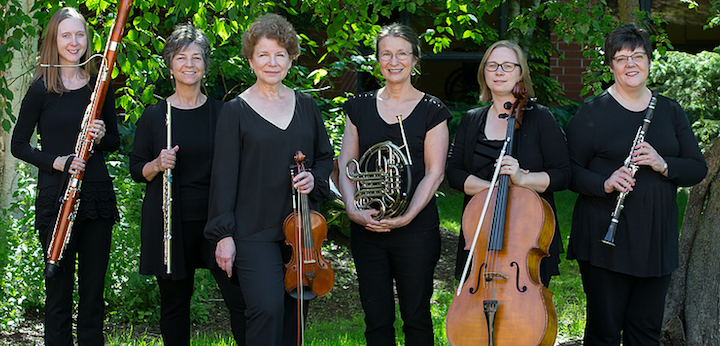






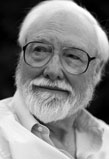





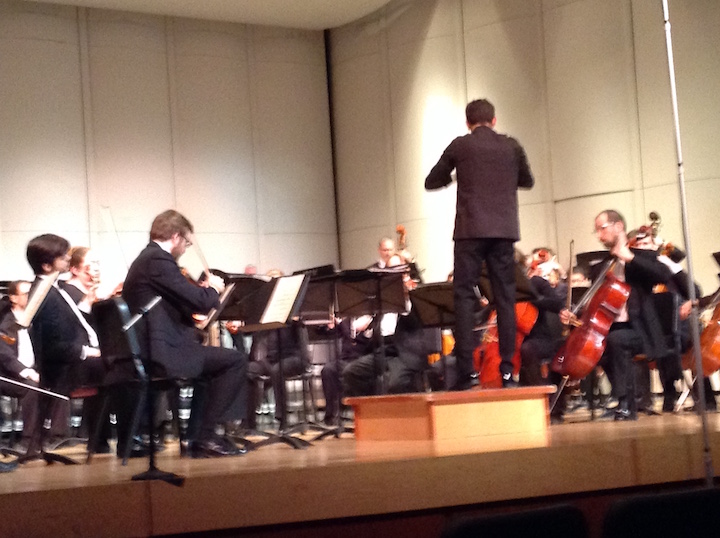
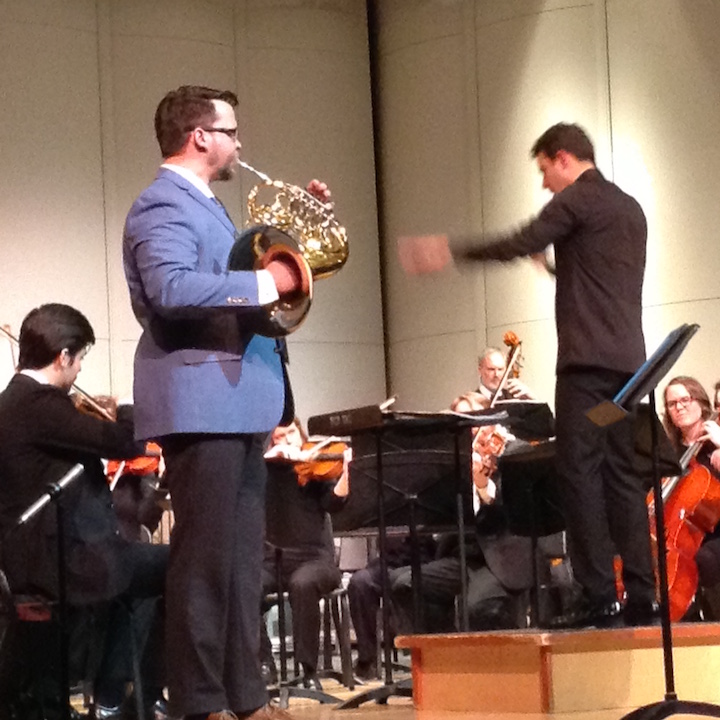
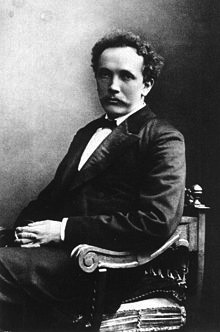
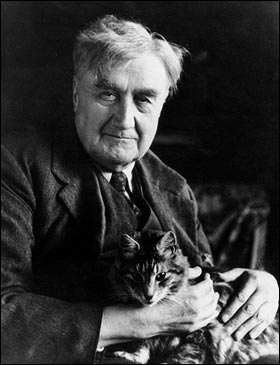
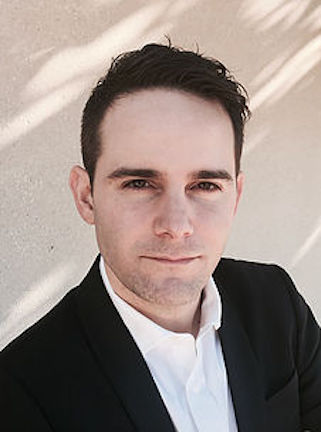





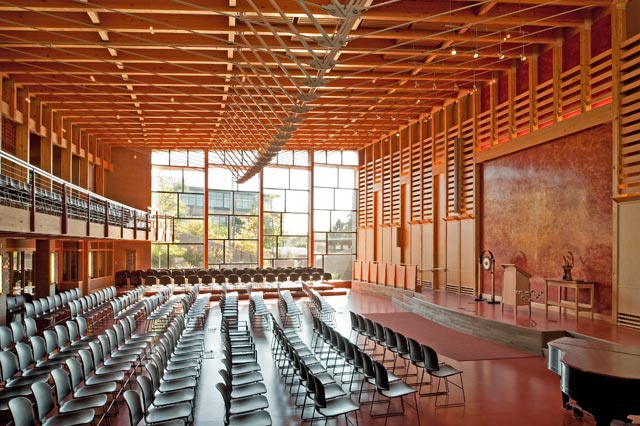







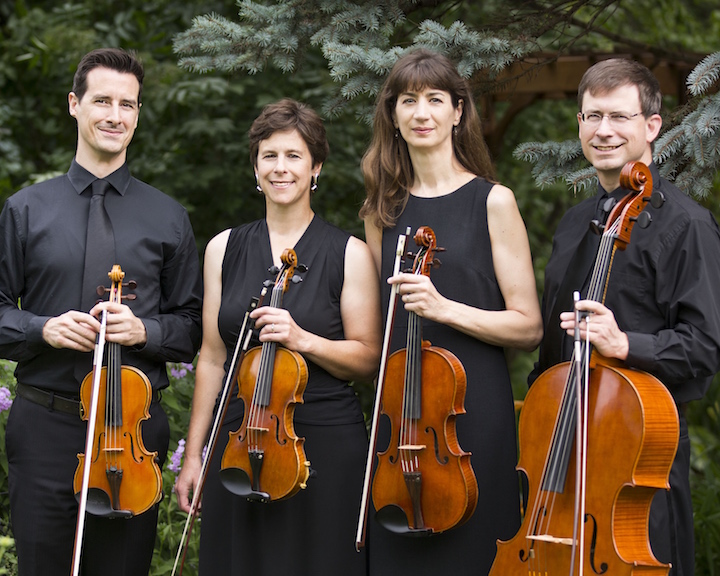


Classical music: You Must Hear This: Violinist Hilary Hahn plays “Mercy” by Max Richter
4 Comments
By Jacob Stockinger
One of the gems in the 27 encores that violinist Hilary Hahn commissioned from 27 different composers a couple of years ago is “Mercy” by the German-born British composer Max Richter.
Hahn has played here several times, mostly at the Wisconsin Union Theater but also with the Madison Symphony Orchestra.
Although Max Richter’s Minimalist music has not been played in Madison as far as The Ear remembers, you might already know his name from the popular recording of his take on Vivaldi in “The Four Seasons Recomposed” or his more ambitious and most current project “Sleep,” which provides music for eight and a half hours of sleeping.
But The Ear confesses he had not heard this moving miniature called “Mercy” until recently, even though Hahn recorded it along with the other 26 encores with pianist Cory Smithe.
He likes it.
And so apparently do a lot of other listeners.
So it is something that is well worth using five minutes of your time to sample.
Write your comments, positive or negative, below.
The Ear wants to hear.
Share this:
Tags: #AntonioVivaldi, #CorySmythe, #GreatBritain, #HilaryHahn, #MadisonSymphonyOrchestra, #MaxRichter, #TheFourSeasons, #UnitedKingdom, #ViolinConcerto, #ViolinMusic, #WisconsinUnionTheater, ambitious, Arts, British, Chamber music, Classical music, comment, commission, commissions, composer, Cory Smythe, current, encore, gem, German, Germany, Hilary Hahn, Jacob Stockinger, listener, Madison, Madison Symphony Orchestra, Max Richter, mercy, miniature, minimalism, Music, name, negative, Orchestra, Pianist, Piano, positive, project, recording, sample, Sleep, sleeping, The Four Seasons, UK, United States, University of Wisconsin-Madison School of Music, University of Wisconsin–Madison, YouTube